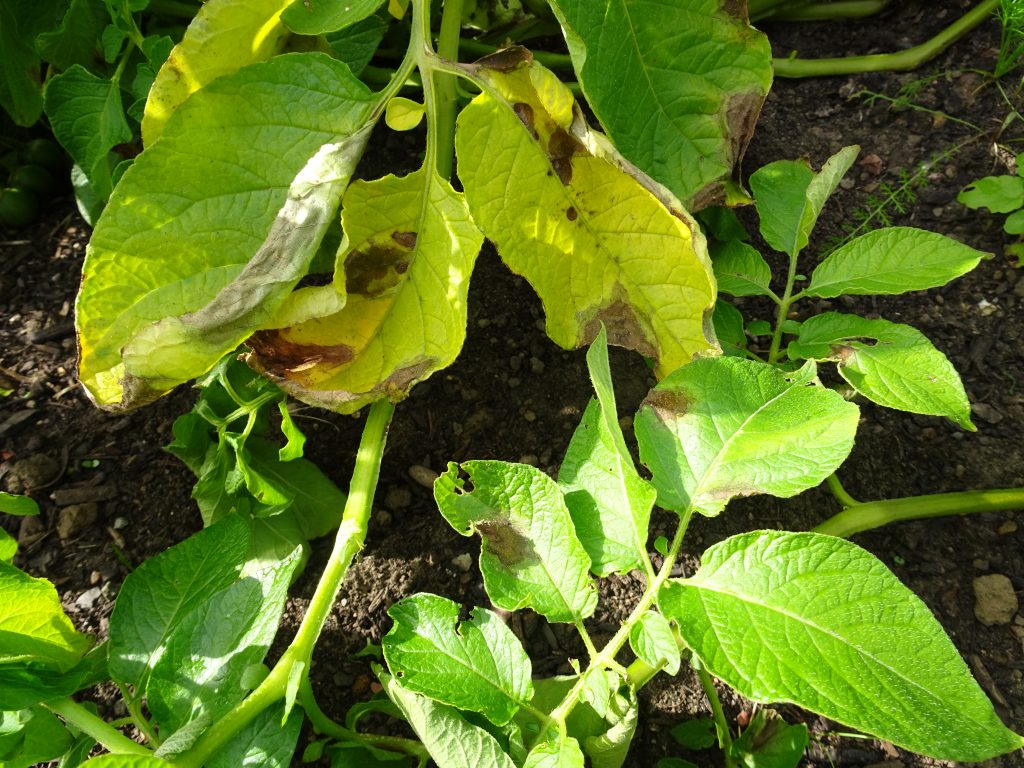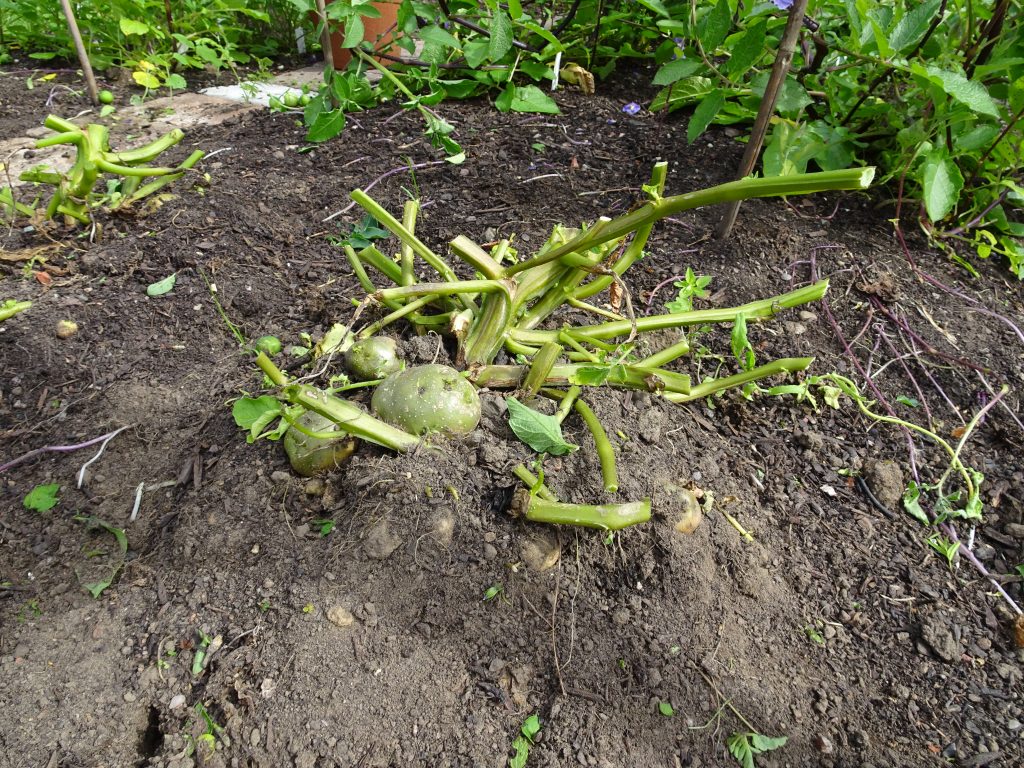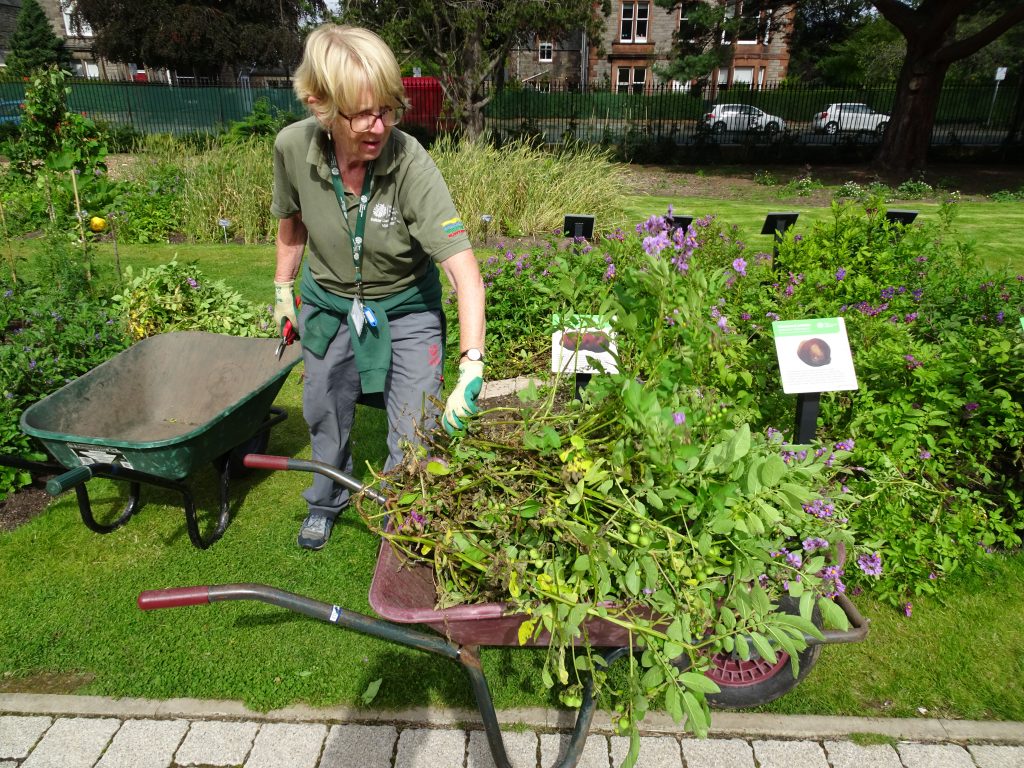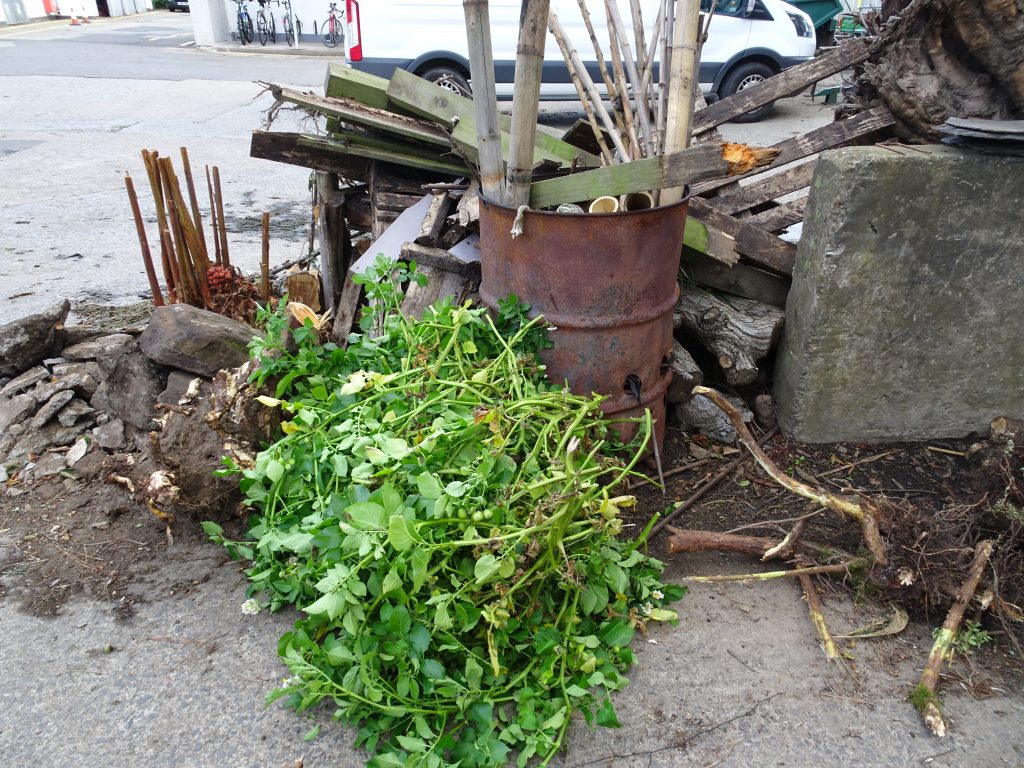A new twist in the story of the Edinburgh potato (Solanum xedinense) could be the most interesting yet. Late blight (Phytophthora infestans) symptoms were found on many of the potatoes growing next to the Edinburgh potato plants on 20 August 2019. This disease is the scourge of potato growers the world over and requires as many as 15 fungicide applications to maintain a healthy crop under conventional farming systems.

Distinctive yellowing of the leaves and large brown patches of dead tissue are the signs to look out for. If you act quickly and remove the above ground parts in the early stages of infection the potatoes underground should remain healthy and can be harvested after a few weeks. The reason for not harvesting right away is that spores of the pathogen on the soil surface are generally killed by sunlight. If you delay the harvest you should avoid bringing live spores into contact with the tubers, which could infect them.

Although it was sad to see such a fine display of flowering potato plants getting the chop, it is fair to say that this cloud does have a silver lining. With late blight widespread this year due to a damp summmer (this disease is very weather dependent) we now have the opportunity to observe the remaining healthy plants to see if any of them show signs of resistance by remaining free of symptoms.


The Edinburgh potato is of interest because it has potentially inherited resistance to late blight from the Mexican wild potato Solanum demissum. By complete coincidence some disease resistance results from inoculation testing of our hybrid potatoes carried out by the James Hutton Institute arrived as we were cutting off the potato tops. What these results have shown is that not all the hybrid Edinburgh potatoes will be disease resistant. Some have inherited the effective version of the resistance gene (R gene), while others have not. Without the right version of the gene the hybrid plants will be susceptible to disease. The next days and weeks will involve close monitoring for signs of disease.
The full details of the process of recreating the Edinburgh potato are published in Sibbaldia: The International Journal of Botanic Garden Horticulture issue 19 available to download here.
